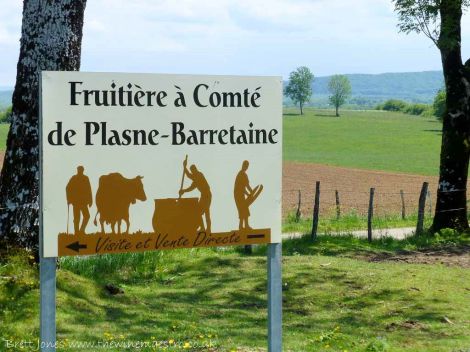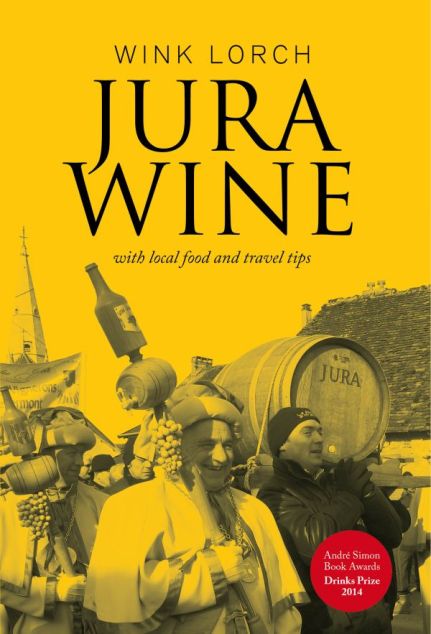 As part of preparations for the Jura wine book, on our visits to the region earlier this year we were not only eating the local cheeses as we always do, but learning about them too. Of course, we started with the most important cheese, Comté made only in the Franche-Comté region, of which the Jura department is one part.
As part of preparations for the Jura wine book, on our visits to the region earlier this year we were not only eating the local cheeses as we always do, but learning about them too. Of course, we started with the most important cheese, Comté made only in the Franche-Comté region, of which the Jura department is one part.
To watch them make the cheese Brett and I made a visit to a fruitière in Plasne, a village on the Premier Plateau (the first plateau) above the Jura town of Poligny, considered the capital of Comté. Then later we went further up the mountain for an hour to visit the magnificent ageing cellars of the famous cheese merchant Marcel Petite.
A few fast facts:
- Comté was first documented in the 12th Century
- Farmers often had only one cow, so the milk was delivered to a fruitière, one of the earliest forms of cooperative
- Only unpasteurized milk from Montbéliarde and French Simmental cows is allowed
- There are over 3,000 family farms supplying milk to one of their local fruitières
- To make each meule (wheel of cheese) weighing 40kg you need 450 litres of milk
- The fruitière makes cheese every day under the control of a maître fromager (master cheese-maker). Although machines are used it can never be an automated process as it has to be strictly controlled.
- The region has 15 caves d’affinage (maturing cellars)
- The cheese must be aged for at least four months and may be aged for 18 months or occasionally longer
- Comté became AOC in 1958 and then Appellation d’Origine Protégée (AOP) in 1996.
- Comté accounts for the largest volume of AOP cheese in France.
Saving more details for the book, I’m instead sharing with you some photographs taken by my partner Brett and a few short explanations. Are you hungry yet?
Many parts of the Jura wine region have scattered vineyards with pastures in-between. In the summer months you sometimes see the distinctive tan and white Montbéliarde cows grazing there. The photo above was taken in Lavigny in the Côtes du Jura just north of Lons-le-Saunier.
The various fruitières all share this distinctive signpost and most have shops and sometimes visiting facilities too.
Up at 1100m (3500 feet) in the forest of the Haut-Doubs near the ski resort Métabief is the amazing old military fort Saint Antoine, which today houses Marcel Petite’s cheese ageing facility. The combination of high altitude and caves buried far below the earth allows for ideal ageing conditions. You can take a tour around the fort by appointment.
The so-called ‘cathedral’ of Comté has a series of galleries stretching along 300m in which the cheese is stacked and aged. At any one time there will be around 100,000 wheels of cheese.
Machines are used to turn each cheese regularly (see video below). The cheese cellar-master periodically checks each one taking it out and tapping it with a type of hammer, listening to the sound each cheese makes, which indicates whether there are any holes. He may also taste it by inserting a special tool to take a sample. The skills needed are not so different from those a winemaker needs, and indeed Comté ageing is every bit as technical and mysterious as Vin Jaune ageing. Above, photographer Mick Rock captures the cheese cellar-master taking out a cheese to check it.
Comté is not the only important cheese from the Franche-Comté region, there is also Bleu de Gex and Morbier, as well as the seasonal Mont d’Or. We have our work cut out learning and writing about these cheeses. Below are Comté, Morbier (behind) and Bleu de Gex, photographed by Mick Rock of Cephas Picture library, who specializes in wine, food and travel.
The short video below shows the fabulous contraption that turns and washes each cheese. Thank you again to Brett!
.









